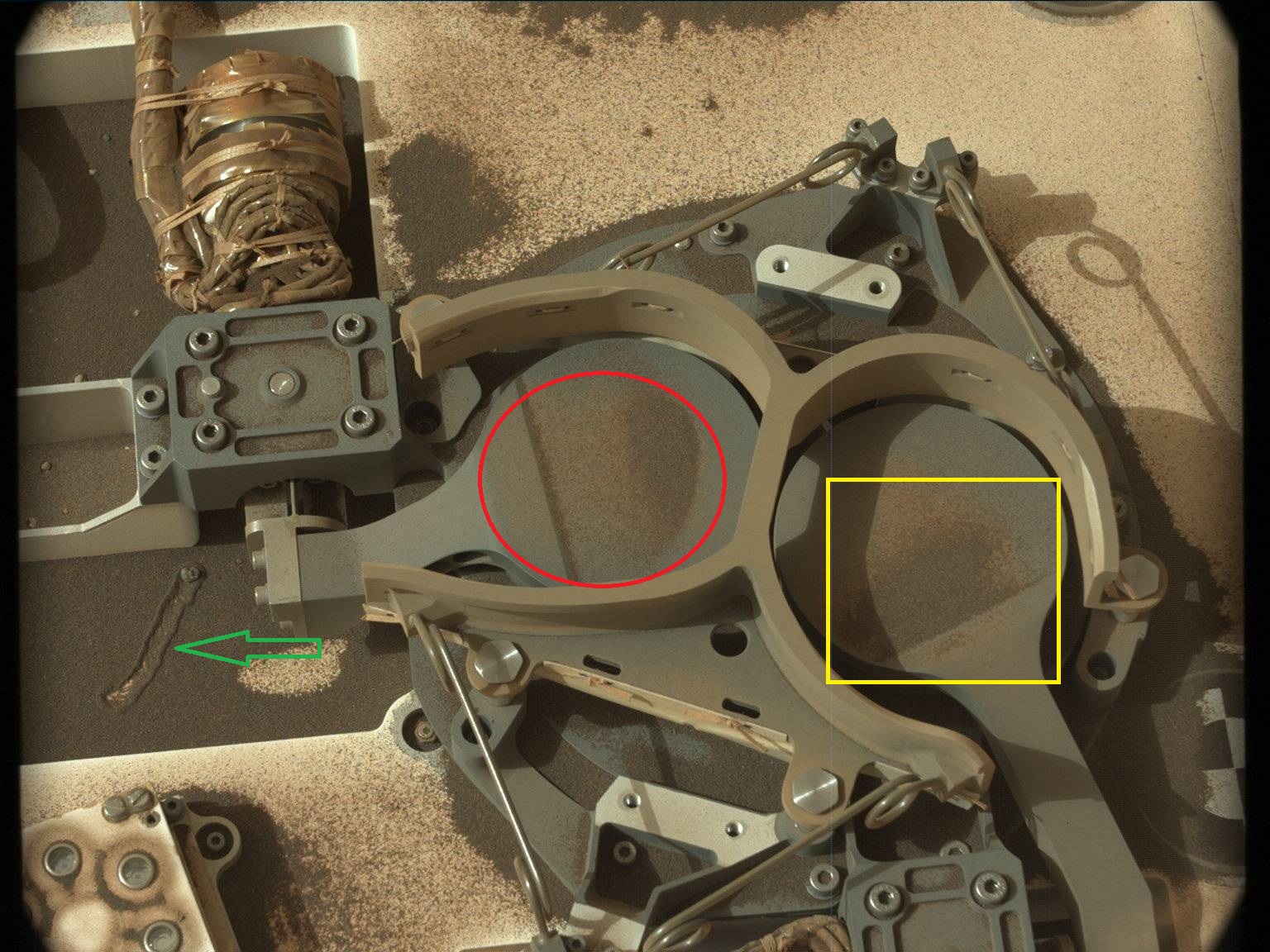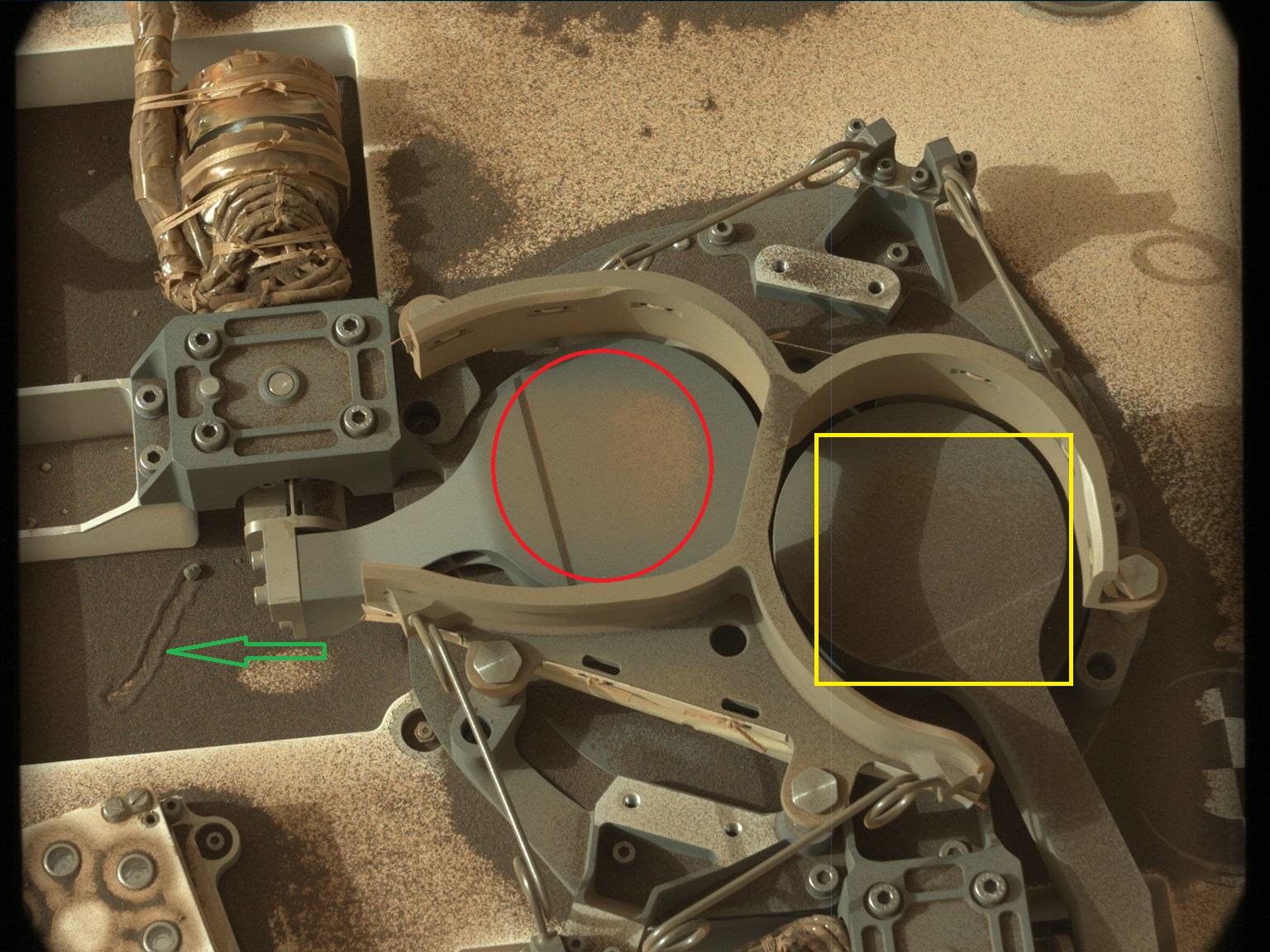

| Online: | |
| Visits: | |
| Stories: |

| Story Views | |
| Now: | |
| Last Hour: | |
| Last 24 Hours: | |
| Total: | |
Weird Things Happened on Mars Rover Curiosity.
Saturday, April 1, 2017 3:28
% of readers think this story is Fact. Add your two cents.
Last updated on April 4, 2017
This image was taken by Mastcam: Left (MAST_LEFT) onboard NASA’s Mars rover Curiosity on Sol 1651 (2017-03-29 15:15:12 UTC). In the red circle was a pile of sand on the inlet port cover for SAM instrument. Why was the sand there? It should have been around the red circle if wind had blown it up from the ground. The sand may be a portion of scooped sample intended to be dropped into the instrument. Maybe the cover closed before all the sample was dropped off into the instrument. In the yellow square was another pile of sand. Why was the sand there? These two piles of sand would be flattened 48 minutes later (see next photo). Image source: mars.nasa.gov/msl/multimedia/raw/?rawid=1651ML00855400007…
Context: http://www.unmannedspaceflight.com/index.php?act=attach&type=post&id=41120
Context: http://www.unmannedspaceflight.com/index.php?act=attach&type=post&id=41120
48 Minutes Later, Half of the Sand Disappeared.
This image was taken by Mastcam: Left (MAST_LEFT) onboard NASA’s Mars rover Curiosity on Sol 1651 (2017-03-29 16:04:19 UTC). Forty-eight minutes later, most of the sand in the red circle had disappeared. In the yellow square, sand appeared on the handle of the cover. Wasn’t all that weird? Image source: mars.nasa.gov/msl/multimedia/raw/?rawid=1651ML00855500007…
Added on April 2, 2017: NASA’s Report
NASA reported: “Sol 1651 activities executed nominally, so today’s plan is focused on dropping off the fine-grained portion of “Ogunquit Beach” Scoop #1 (now named “OG1”) to CheMin, and SAM analysis of OG1.” Quoted from
https://astrogeology.usgs.gov/news/astrogeology/sol-1652-chemin-drop-off-and-sam-analysis




